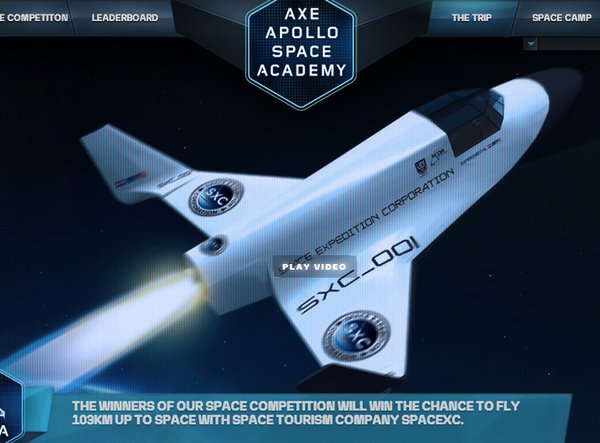Brands
How Super Bowl Ads Drove Viewers to Online Content
Super Bowl ads aren’t just about wow-ing audiences with agencies’ A-game anymore. This year’s big game ads marked an interactive high-point between branded content and the consumers.

One trend this year involved more than one company teasing the estimated 100 million halftime viewers in the days leading up to the big game, trying to drive them to the commercial as it was televised on Feb. 3. Others solicited consumer content, creating commercials based around that.
And at least one ad reversed the process, sending viewers from the game to an ongoing content campaign online.
Curating Consumer-Generated Content
Among the choose-your-own-adventure advertisers, Audi ran a prom-story commercial for which viewers could vote in their favorite ending. And Coke gave its audience the chance to determine the winners of a Hollywood-movie themed desert race.
Taking a look at numbers for just the Audi ad, the carmaker racked up nearly 10 million views on YouTube for the ad, “Prom”, which ultimately went to broadcast. And while the company has declined to to tell NPR how many people voted, by our research that YouTube response put Audi in the same class as recently trending videos by P!nk and ones starring David Beckham. Also, by comparison, stacked up against Dodge Ram’s non-interactive Superbowl commercial — “Farmer” — Audi came out on top, in terms of YouTube looks, by nearly a million more viewers than the pickup crowd delivered.
“I’d love to see brands incorporate users into storytelling in other ways involving technology innovations and consumer-generated media.” — Rebecca Lieb
Meanwhile, Ford and Toyota collected images and stories from their intended audiences, creating Super Bowl ads that featured bits of what selected submitter sent. (Ryan Koch of Fitchburg, Wisc., won a spot for his photo with Toyota.)
Stories from participants became the prompt for the script of Ford’s Jimmy-Fallon curated, Wil-Wheaton-cameo piece (for its Lincoln line of vehicles). You can check out more of what they’re up to, now, with the piece, here.
So, what’s one expert’s take on what all this means?
Rebecca Lieb, an analyst with Altimeter group, said that the current trend is clearly about the consumer “ballot.”
“Voting, as with the Coke or Audi spots, is seeing a burst of popularity,” said Lieb. “It’s also been echoed in the Monopoly’s campaign for the next playing piece, the cat.”
Not that brands should rest on what’s worked, so far, she cautioned.
“While voting does offer a degree of interactivity and engagement, as well as a payoff in learning the results, it runs the risk of getting stale as a tactic if too many brands jump on the bandwagon,” Lieb said. “I’d love to see brands incorporate users into storytelling in other ways involving technology innovations and consumer-generated media.”
“Ford and Toyota did this to an extent, using user-generated material,” said Lieb, although she added that it’s not a new development, its roots go back: “This has been going on for a while, with Doritos leading the make-a-Super-Bowl-spot contest several years back.”
Axe Ad Drives Fans to Web (and Off Planet)
Body-spray maker Axe has never been accused of being overly subtle, when it comes to marketing its products — women disrobing in a heartbeat as they catch the scent, that’s pretty much the recipe.
But Super Bowl fans saw “Lifeguard”, on Feb. 3, and the idea was suddenly more about getting into a new suit of clothes. A space suit.
“It’s undeniably remarkable and allows for some great ongoing storytelling.” — Sonia Simone
The 31-second spot sent viewers to axeapollo.com for nothing less than “your chance to go to space.” The company had already teamed up with astronaut Buzz Aldrin to put nearly one dozen people into orbit via the Axe Apollo Space Academy. The Super Bowl campaign created room for one more lucky spaceshot on its upcoming private lifter.
Sonia Simone, co-founder and chief marketing officer at Copyblogger Media, said that she sees Axe’s TV-to-Web campaign as part of an idea about content that’s developing on a larger scale.
“Mainstream advertisers are using ‘content’ to mean: really attention-grabbing advertising that has very little to do with our product,” Simone said. “I don’t mind this strategy for a low-cost product like Axe that can work as an impulse purchase. It’s undeniably remarkable and allows for some great ongoing storytelling. Whether all of that sells enough additional product to recoup the costs of the program is another question entirely … that’s for the bean-counters to decide.”
And if there are other takeaways about 2013 and social-media dependent Super-Bowl ads, Lieb said they should include this observation: “Interesting that this year, ads drove viewers to proprietary sites more than Facebook, which was the catalyst for many of last year’s spots. It’s an interesting shift in channels.”
Get better at your job right now.
Read our monthly newsletter to master content marketing. It’s made for marketers, creators, and everyone in between.




